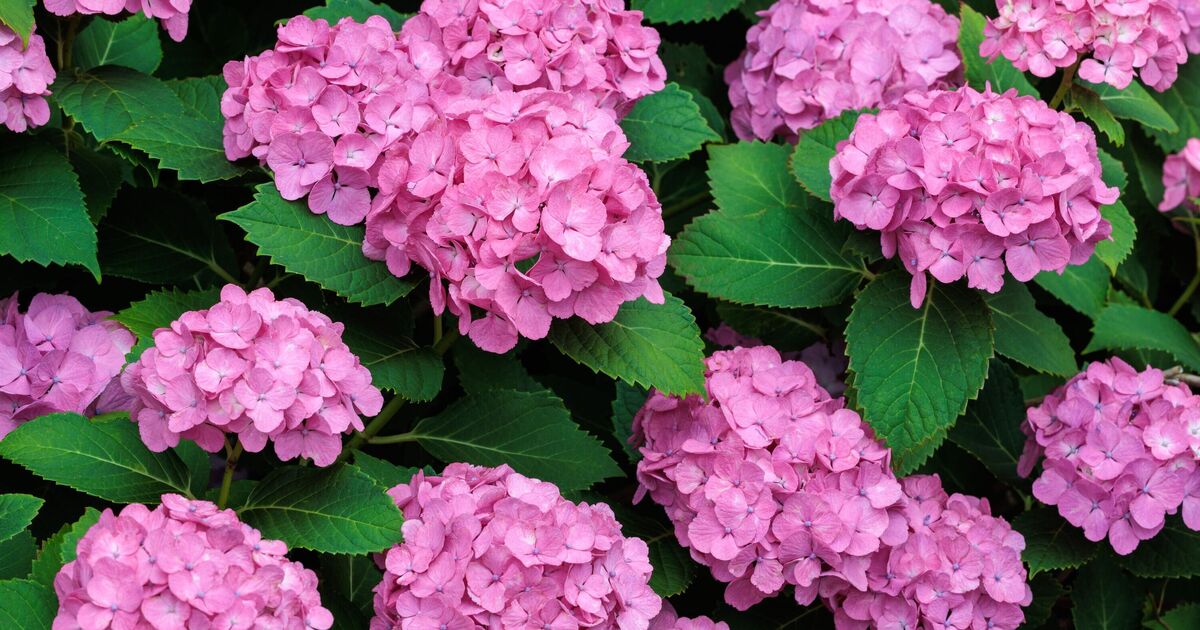Three hydrangea tasks to do now
Watering
According to the Royal Horticultural Society (RHS), hydrangeas like moister soils that are not prone to waterlogging.
They said: “Improving the soil and mulch with organic matter, such as garden compost or a manure-based soil conditioner, will help to keep the soil moist.”
To help them thrive for longer, you can also plant hydrangeas in sun or light shade in a sheltered spot away from cold winds.
In the summer, they may need morning and evening watering, but it’s best to check the soil first to avoid overwatering.
Deadheading
Deadheading hydrangeas involves removing the faded or spent flower heads to “encourage more blooms”.
Deadheading also helps to maintain the overall health and appearance. To deadhead, start by identifying the flowers that have faded or turned brown.
Then, simply pinch them off with your thumb and index finger to encourage new, healthy buds to form.
When it comes to pruning, hydrangeas should be pruned in late winter or early spring, but the exact time depends on the variety.
Fertilising
Hydrangeas benefit from fertilising, especially when planted in spring, with a balanced granular feed.
For specific soil conditions to influence flower colour, specialised acidifying or alkaline feeds, such as coffee grounds, can be used.
Always follow the manufacturer’s instructions for application rate and frequency to get the best results.

